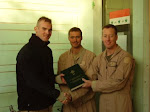Report: Feedback on New Translation Is Positive
Elegance, Dignity, Cadence Called a Great Improvement
LONDON, AUG. 30, 2011 (Zenit.org (http://Zenit.org/)).- In countries where parts of the new English translation of the Roman Missal are already in use, the feedback has been very positive.
This is the report from Monsignor Andrew Wadsworth, executive director of the Secretariat of the International Commission on English in the Liturgy(ICEL), in a podcast from the Catholic Communications Network of England and Wales.
The new translation of the Order of Mass is already in use in South Africa, New Zealand and Australia. Other places, such as England and Wales, have already begun using the new musical arrangements.
Full implementation of the translation has generally been set for the first Sunday of Advent.
"There has been a lot of feedback from the countries that are already using elements of the translation," Monsignor Wadsworth said. "Generally the feedback has been very positive. People find the elegance of the language, its dignity, the sort of cadence of the language -- which particularly lends itself to the sung parts of the liturgy -- they find all of that to be a great improvement."
The monsignor explained that the altar edition of the new missal "has the largest amount of music of any missal the Church has ever produced in any language." This music is Gregorian chant, which "takes us back to the Church of the first millennium and the earliest centuries. That's the music which is in the Latin Missal, of which our English Missal is a translation," he explained.
Unpacking
Monsignor Wadsworth highlighted that the vocabulary of the new translation will require and give opportunity for catechesis, with terms that "need unpacking."
This implies a "catechetical process," he observed. But one of the great opportunities of the new translation, the priest suggested, is the opportunity for "more delving into the riches of the liturgy."
"It's right that we prepare for this by catechesis," Monsignor Wadsworth said, "and it's right that we revisit things that are perhaps very familiar to us to try to deepen our knowledge and understanding of them."
--- --- ---
On the Net: Click here for full 11-minute audio interview, including an explanation of the difference between formal and dynamic equivalence in translation, and a request for a prediction on new translations in upcoming years.
A Recipe for Readiness – A Homily for the First Sunday of Advent
-
The first weeks of Advent focus more on the Lord’s second coming in glory
than on His first coming at Bethlehem. The gospel clearly states that we
must a...
5 days ago











No comments:
Post a Comment